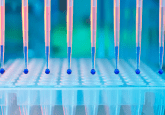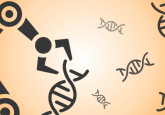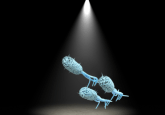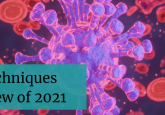Could digital PCR revolutionize leukemia monitoring and treatment?
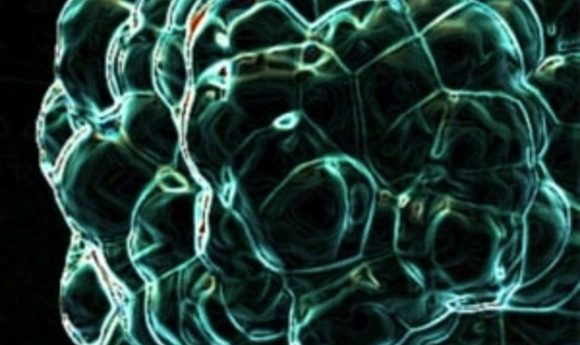
Digital PCR could finally solve the issue of accuracy in PCR diagnostics. A BioRad spokesperson discusses the potential droplet digital PCR holds for chronic myeloid leukemia monitoring and treatment.
In this interview, a BioRad (CA, USA) spokesperson discusses droplet digital PCR (ddPCR), its differences to qPCR and its potential applications in the management and treatment of Chronic myeloid leukemia (CML).
Chronic myeloid leukemia is theoretically a manageable disease. What challenges are facing us in its management at this time?
BCR-ABL is the causative gene fusion that results in CML. Following initial diagnosis and therapy selection, the current standard of care for monitoring CML patients is to measure BCR-ABL transcript levels every 3 months using conventional PCR methods. This provides a measure of disease burden and the ability to determine whether a patient’s disease is stable or progressing. The current clinical cut-off for BCR-ABL measurement, the clinical decision point, is known as MR3. This value represents the ratio of BCR-ABL copies to reference gene copies, in most cases ABL, as being 1 in 1000. When the ratio of BCR-ABL to ABL exceeds MR3, a decision needs to be made to switch therapies or alter treatment.
Many patients do remain below MR3 for years, but the challenge today lies in being able to reproducibly and precisely measure BCR-ABL at very low levels to determine whether a patient may be developing therapy resistance or the disease is progressing. Currently, patients can develop drug resistance and their long-term outcome could be significantly improved through early detection of increased BCR-ABL transcript levels. This might not be readily seen in time via current qPCR techniques – the current standard of monitoring efficacy – until later in the disease progression. The ability to measure these deep levels of molecular response (>MR5) is the primary challenge with current methodologies.
In some cases, patients with sustained deep molecular response could theoretically cease therapy if monitoring was sufficiently sensitive; however, this is currently not possible with qPCR.
What techniques are on the horizon to overcome these issues?
The current standard of care is using real-time PCR or qPCR to monitor BCR-ABL levels. Since the introduction of digital PCR by Bio-Rad in 2011, multiple research groups have developed alternative methodologies using ddPCR to measure BCR-ABL. Bio-Rad has also developed and commercialized its first ddPCR diagnostic test – the QXDx BCR-ABL %IS Kit. ddPCR offers several advantages over real-time PCR for BCR-ABL monitoring.
First, is the ability to precisely measure nucleic acid concentrations to within 10%. Another advantage is the ability to detect rare nucleic acid variants in the background of complex mixtures of wild-type (normal) molecules. This is of paramount importance for BCR-ABL monitoring and quantification, where the need to measure BCR-ABL levels both sensitively and precisely can help physicians manage their CML patients more effectively. The sensitivity and precision of ddPCR allows small changes in BCR-ABL levels to be seen over time, so if a patient’s disease is progressing, physicians can act sooner to alter that patient’s care.
How is ddPCR different from qPCR?
qPCR relies upon the use of oligonucleotide primers and fluorescent probes to quantify the amplification reaction as it’s occurring. A biological sample is typically put into a reaction mix and that entire reaction is run through a real-time PCR instrument with single measurements made of the entire sample. Digital PCR shares much of the same chemistry as real-time PCR – standard oligonucleotide primers and fluorescent probes are used to monitor the amplification, but rather than measure the entire reaction in bulk, the reaction is partitioned into thousands of nanoliter-sized droplets.
These droplets are comprised of an oil and water emulsion, and contained within each droplet is a randomly partitioned mixture of nucleic acids, along with the standard ddPCR reagents, primers and probes. These droplets are thermocycled on a standard PCR instrument and the droplets that contain a molecule of interest will become fluorescent.
After the cycling, the droplets are analyzed individually through a droplet reader that is similar to a flow cytometer instrument, the number of fluorescent droplets is counted, and the amount of nucleic acid quantified based on the number of positive droplets. The benefit there is in the area of detecting rare molecules in a complex mixture of wild-type molecules – if the measurement is performed in bulk as it is in real-time PCR you have competition of resources – primers and probes – for different target molecules, thereby limiting your sensitivity of detection.
By partitioning the sample, this competition is effectively reduced because the composition of each droplet is significantly different, meaning the variant is present in a higher abundance in some droplets, allowing the PCR to have a better chance of detecting that rare variant.
How far are we from these new tests being the standard?
Bio-Rad’s QXDx BCR-ABL%IS Test is available as a CE IVD-marked test outside the USA. Bio-Rad has also submitted this same test to the FDA and it is currently under review. We are also collaborating with several key opinion leaders and experts in CML, to enable research studies that may begin to introduce changes in the standard of care for CML patient management.
The exquisite sensitivity and reproducibility of this test is also playing an important role in research studies aimed at identifying trends in BCR-ABL levels to help predict when it might be appropriate to cease therapy.
Finally, digital PCR is being applied across a broad range of clinical applications, including oncology, transplantation monitoring, infectious disease and prenatal/newborn screening – owing to the ability to detect rare variants. Bio-Rad is exploring multiple opportunities for clinical applications of ddPCR.
New research in oncology diagnostics is constantly in the spotlight. Where do you see the field in 10—20 years’ time?
Over the next 10–20 years, I believe we will be able to capture more information from the human genome and start to translate this into drugs and diagnostics.

